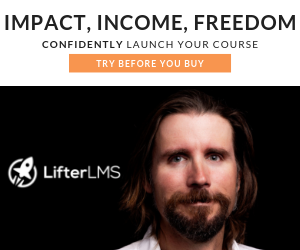There is definitely some Matrix-like inception going on in today’s blog.

We’ve created the Ultimate Guide on, well, how to write an Ultimate Guide.
Here’s a fun fact: in this information age, it’s relatively easy to find guides on anything you want.
The results are good, but then there comes a showstopper that immediately makes you pause in your random clicking and reading, and absorbs and holds all your attention.
You’re actually learning something, and you don’t want to click away.
This is the benefit of building an ultimate guide on the internet.
We’ve all seen these pieces. They are referenced repeatedly, get tons with traffic, and see non-stop shares across social platforms.
From how to groom your Labradoodle, to the entire guidelines for changing guitar strings, a mind-boggling Javascript tutorial, or the ultimate whammy guide on creating great social media posts.
Psst…we can help you with that last one.
The ultimate guide that truly adds value could be called the holy grail of content pieces.
They’re some of the most comprehensive, authoritative, and popular pages you’ll find. If you’ve ever turned to cyberspace to learn something, chances are you’ve used one at some point.
Today, I’m sharing tips on how to create an ultimate guide of your very own.
This will cover it all. Starting with strategy and brainstorming all the way through revising and updating, this comprehensive guide will teach you everything you need to know to get started.

7 Steps on How to Write An Ultimate Guide
1. Why You Should Create an Ultimate Guide (and What it Means)
2. Topic Research: Study Your Topic, Audience, and Competitors
3. When Writing, Start Off with a Format – or Better Yet, a Template
4. Conduct Keyword Research AFTER Your Outline is Created
5. Go Heavy on Examples, Images, and Statistics if Applicable
6. Get a Designer Involved
7. Do Ultimate Editing and Tracking for Your Ultimate Guide
All of these are coming in our blog topic today, complete with a visual infographic on the topic. First, let’s share a story about why and how ultimate guides work so well.
The Story of an Ultimate Guide That Helped Put a $7 Million Business Together
We will start with strategy – but first a little preface on exactly why you should get excited about building your ultimate guide.
Creating an ultimate guide means giving your readers a comprehensive content piece they can’t find anywhere else.
There’s another advantage to that – you’re associating your name with that outstanding piece.
Many readers will have already heard of Unbounce. While you may know them for their landing pages, popups, and sticky bars, you might have also seen the ultimate guide that skyrocketed their brand to success.
The year was 2011. Oli Gardner created a free six-month guide to marketing for Moz. Between the great content and the massive infographic, it racked up views in no time. Below is the top part of the graphic – we won’t show the whole thing here, but recommend checking it out in its entirety.

Nice, huh?
The piece clearly told readers what they wanted to know. It took an already-talented brand and strapped a rocket to their back.
The results? This guide was downloaded over 150,000 times and earned thousands of backlinks. Blogging was their survival, and epic content put them on the map, according to their lead Content Strategist Dan Levy. Just five years after the company’s founding, Unbounce went from nothing to over 9,800 paying customers and $7 million in annual revenue.
How’s that for the “ultimate guide success story?”
A good guide is as useful to you and your brand as it is to your readers.
One look at that graphic shows the main reason why this guide was so successful. You can tell the people behind it knew their subject matter – they didn’t just know it, they lived it and breathed it. When you’re creating this type of piece, you need to be a knowledgeable, trustworthy authority on the topic.
This takes years of work honing a craft, tons of practice, and hours upon hours of research. You’re doing this so your readers don’t have to – that’s why they’ll appreciate it and you.
Your Ultimate Guide on How to Write An Ultimate Guide (The Infographic)
Scroll below this guide for our more in-depth written guide on the topic.

Beginning Stages: Research Your Topic (and Other Ultimate Guides)
Content creators know all about preceding their creation process with strategy. If you’re looking to build a piece that’s more informative and in-depth, you should expect a research period of the same complexity.
The amount of time you spend on a piece isn’t always proportional to its quality – but if you’re doing things the right way, it should be.
This stat is just for blog posts, but if it works for those, you can imagine how much better it works for an ultimate guide.

Image from Orbit Media
The interesting observation is the lack of significant variation between the 1-6-hour mark. Yet, when you go beyond that, results tend to be much better.
As for specific research strategies, a lot of your research will come from doing. Your ability to give someone a guide to something is related to your knowledge of it.
That isn’t to say you shouldn’t search the web for additional insight. When you’re in the strategy phase, think about the following:
- How to Explain Things You Already Know: Don’t fall into the Dunning-Krueger Just because you are an expert on something, doesn’t mean everyone else is. In an ultimate guide, you want to explain everything. The fundamentals, the nuances, the maybe-you-should-know-this-too parts. The more comprehensive your resource is, the better. It should be a one-stop piece.
- How to Explain the Same Thing in Multiple Ways: Searching for insight about your chosen topic isn’t just so you can explain it. You need to explain it in multiple ways, if need be. If the same advice can be given from two different perspectives, make the effort to cover both. Remember, you may be talking to beginners, too. The ultimate guide to content writing, for example, may be used by people other than expert copywriters and career marketers.
- How to Explain Things Your Competitors Don’t: Researching your topic also means researching competing ultimate guides – or other comprehensive content types like eBooks and white papers. See how other people are explaining it, and know whether your insight could provide something the competition doesn’t. This is the key to having the ultimate resource that ranks the highest.
Take our agency for example – one thing we do is create a table of contents to start our authority pieces and ultimate guides. This is something that not everyone does, so it sets us apart.
Extra Resources for Fine-Tuning Your Strategy
Your strategy process should be comprehensive, and that means covering all those FAQs. If you wonder about the questions people ask but don’t always get answers to, try visiting sites like Quora.

Image from Marketing Land
Yes, using it as a source of answers is about as reliable as using Wikipedia – we don’t recommend it, especially in an authority piece. But while it isn’t great for answers, it’s awesome for questions. See what people ask about your topic, and you’ll know what answers to include in your piece. It can also help you understand common misconceptions so you can clear them up.
You should also aim to make your content evergreen – this type of content never goes out of style. To do this, focus on the fundamentals and points that transcend time-relevancy. You can also adhere to this style by updating your ultimate guide periodically. But, more on that later.
As for the keyword research, we’ll cover that in the section after next – first, let’s work on crafting a format that helps your readers realize they’re in the right place.
Formatting Your Guide and Picking an Ultimate Guide Template
For the sake of example, I’ll be putting together a sample format (with some sample body text as well) to show you how to create an ultimate guide based on a great outline.
This is where things start to get exciting. You’ll be seeing your ultimate guide take form in the early stages. You’ll also get an idea of how to bring everything together. Every format will be different, so don’t think you have to make yours like every other guide on the same topic.
For this format, we’ll go with one of the examples we mentioned at the beginning – how to change guitar strings. To make it a little more specific, we’ll make it “How to Change Guitar Strings on a Floating Bridge.”

Image from Floyd Rose
Our outline:
Your Guide: How to Change Guitar Strings on a Floating Bridge
- Gather the Tools You Need
- Sub-points about the right tools
- Prepare Your Instrument
- Preparation sub-points
- Remove the Old Strings
- Sub-steps on how to do this
- Replace the Strings
- Sub-steps on how to do this
- Tune the Guitar
- Sub-steps on how to do this
- Relock the Nut
- Sub-steps on how to do this
Whew! Remember, formatting your ultimate guide isn’t just about making steps – it’s about making steps within your steps. Remember, we’re aiming for a thorough, detailed, comprehensive piece that tells your user everything they need to know.
Formatting: Steps Within Steps
So, under the first of our headings, we could have a few sub-categories. The copy could look something like this:
Gather the Tools You Need
After you’ve got your guitar and a fresh pack of your preferred strings, make sure you have the following: a set of Allen wrenches, wire cutters, and a blanket or large soft surface to protect your instrument from harm while you change the strings.
3 Recommended Tools
The following tools aren’t mandatory for getting your strings swapped out on a floating bridge system, but they can definitely make things easier:
- String Winder: Whether you go for manual or electric, a winder can help you avoid the tedium of turning your pegs dozens of times by hand.
- Fretboard Cleaner and Polishing Cloth: Changing your strings is a great opportunity to clean your fretboard. Make sure you use a cleaner specifically made for fretboards – don’t use things like rubbing alcohol, as they could pull the oil out of the wood and cause it to crack.
- Neck Cradle: This nifty invention rests the neck safely so you can work with two hands, giving you just enough elevation so you can maneuver comfortably and have easy access to the tuning pegs.
Troubleshooting the Floating Bridge System
The floating bridge system is notorious for making string-changing difficult. It’s not as hard once you understand the process, but some people wonder whether they should block the bridge to make it “fixed” as they change strings.
We’ll cover how to tune, adjust, and retune your guitar in the tuning section – so you don’t have to block it to use this guide. Many people have said blocking is dangerous to the bridge system. Do so at your own risk – but if you do choose to, a block of wood or a stack of picks could do the job.
If you want to make your guitar’s floating bridge fixed (temporarily) the safe way, consider investing in a locking system like the Tremol-No. Note, this requires its own installation, which is not covered here.
From our sample, you can see that each heading from your table of contents can have subheadings, bullet points, and sections for common questions associated with each part.
If you’re still not sure about how to create your format, try drawing inspiration from others. You can even use ultimate guide templates or examples – simply plug in your own information or alter the existing entries to fit what you’re creating.
Creating or writing a how-to guide template or ultimate guide template may take some trial and error. You may get part of the way through and find you need to go back and explain something else a little more thoroughly.
Formatting is the first part of the actual writing process, and the more work you put into the content the more detailed and precise your format should be.
How Long is Too Long?
When we’re talking about ultimate guides, we’re talking about detailed pieces. However, everything is subject to diminishing returns – water, money, and yes, even great content can lose its value or even become detrimental in too great a volume.
According to one study, the answer actually depends on what you’re writing about.

Image from WordStream
To be fair, how-to guides could fall into the category of personal development – or maybe a hybrid between that and another field. Simply make sure your content centers around the main points of your format, and you should stay on track without delving too deep into unnecessary specifics. Typical ultimate guides end up around 3,000 words or more.
Just remember to stay on point with your main topic. For example, in our sample piece, we wouldn’t necessarily go into steps about how to check the guitar’s intonation – such a topic would warrant its own piece, despite involving some similar terms and tools.
Choosing Keywords For Your Ultimate Guide
Keyword research is something every content creator is (or should be) familiar with. In the internet age, understanding SEO is great for making sure the people who could benefit the most from your content can find it easily.
Need help with SEO basics? Download our 15 SEO content on-site ranking factors along with 8 steps to accurately optimize your content.
When we’re talking about how to write an ultimate guide that is properly optimized, you should keep the following in mind:
- Longtail Keywords Work Best: If you go with a word like “content strategy,” you could attract people who are searching for things like “average cost of content strategy” or even “content strategy statistics for 2019.” If you’re writing a guide on “how to build a great content strategy” use that as your keyword. Longtail keywords are more specific, and they’re great for making sure you attract the optimal traffic.
- SEO Best Practices Still Apply: Even though the type of keywords you use will be a little different, you should keep the same principles in mind. Make sure you have your keywords in the right places – headers and sub-headers, especially. Don’t forget to keep frequency in mind. Even in longform authority pieces, don’t resort to keyword stuffing. Use them organically and conversationally to rank higher and create more valuable content.
- Look to Your Format for Example: The reason we covered formatting first is that it is a great place to find keyword ideas. Going back to our own example, think of all the relevant keywords that could be used based on the headers. They include: “how do I remove strings from a floating bridge,” “do I take all guitar strings off at once,” and “how to keep a floating bridge guitar in tune.” Longform, yes – but that’s the idea. They’re specific, and you can use them as sub-headers in quote format if necessary.
Also, the same tools can be useful in guides just as they are in blogs. The tried and true go-to options like SEMrush, KWFinder, and Ahrefs are still great choices.

Image from KWFinder
The ultimate guide meaning, or purpose, is to answer questions – so your longtail keywords can become your primary keywords. The opposite is also true. Those smaller, shorter keywords are still good – but in this case, you will use them as secondary options.
Power Up Your Guide with Examples and Media
One of the main traps guide writers fall into is being so focused on having all the written content they need that they end up with a text block. Yuck.
Detail is good, but you should break up your copy. Images or even videos are great for making your guide look better. The best part is they also strengthen the guide’s ability to convey information. Many people learn better from seeing things rather than reading them.
Approximately 60 percent of the population are visual learners – the graphic below shows that stat to be even higher according to some estimates.

Image from McKnight Kurland
People are also compelled by the stories of others, and by numbers. Therefore it is wise to use examples and figures when applicable. To make sure your content stays relevant (we’re almost to that section) make sure you keep your stats up to date.
People trust statistics for everything. From our evening weather report to medical studies that eradicate diseases over generations, much of the important information we rely on (and benefit from) is based off hard data.
Examples can also come in the form of real-world stories and popular cases. You don’t want to get too personal when it comes to your ultimate guide, but if examples fit, it is great to put them in.
Consider Getting a Designer to Create Unique Visuals for Your Ultimate Guide
Design is critical to a thorough ultimate guide. While you want to include screenshots, graphs, and images for anything that lends itself to a visual, going a step further can bring even more traffic and growth to your site. For example, you could have a simple infographic designed for your guide – just like the one we designed, above!
Here’s another example. In one of Jon Morrow’s ultimate guides, a 3000-word blog that ranks in the top 10 of Google for how to become a freelance writer, he had a simple infographic designed and embedded that summed up several of the powerful statistics in the ultimate guide.
This is a great example of a value-added design that is 100% original and unique to the ultimate guide where it was posted within.
You can find awesome designers through resources like freelance platforms, LinkedIn profile searches for “freelance designer”, or you could talk to us about the custom blog header sets and ebooks we design for our content marketing clients as part of our content writing packages.
A True Ultimate Guide Requires Ultimate Editing & Tracking
If you’re a content creator looking up how to write an ultimate guide, you’re probably already familiar with the most basic revision best-practices, including:
- Using plugins like Grammarly to check your grammar and diversify your word choices
- Reading your copy out loud as if it were a script to see if it flows properly
- Having a separate editor/co-author check over your work to bring a fresh perspective
I won’t tell you that these don’t apply here – but I also won’t tell you that this is enough. Because, for an ultimate guide, you simply have to do more.
The editing process for an ultimate guide can take a full week. Make sure you have an outside eye assisting in the process.
Then, when you finish your ultimate guide, set up a reminder to monitor and update it after publishing.
It’s easy to assume that when you finish your ultimate guide, you may be fine with how it looks. But, how will you feel about it in a week? A month? A year? Remember – these are pages that will bring in millions of views over the years if optimized properly.
Our story about Unbounce is a perfect example. Such a piece kept getting clicks and circulated through content marketing circles across the globe. If your piece is to have that type of a lifespan and continue generating returns, you need to make sure it is updated regularly.
Luckily, if you’re learning how to create an ultimate guide on a particular topic, you probably already know that topic fairly well. Which means you’re also researching it constantly and keeping up on any changes to it.
If there are new developments, new studies, or any new changes at all, you should put them in your guide if they fit. I know what you’re thinking – what if a development happens and you aren’t able to find it quick enough?
I recommend using proven research tools – like Google Scholar, for example.

With access to plenty of university repositories, this tool is fantastic for finding stats as they come out. The best part is you can set up an alert whenever new articles are published. You can also see which papers have cited which, so you’ll know if you’re bringing in a fresh perspective.
Other popular tools for researching new studies and stats include Trello, Mendeley, and Scrivener.
Don’t forget to promote your ultimate guide again and again. Especially after you’ve made some updates – your readers will thank you for keeping your guide fresh and relevant.
How to Write an Ultimate Guide Your Readers Will Love
Every content marketer, copywriter, and creator dreams about going viral with that piece readers just can’t get enough of.
It’s the one they keep coming back to, share on the regular, and still view years after it is released. There’s arguably no content type that fits this description better than a well-crafted ultimate guide.
Remember, to create an ultimate guide, you should:
- Research your topic from multiple perspectives, understand common questions, and see what others are missing from their own guides
- Craft a format that is organized to cover all major topics in a step-by-step format with the proper amount of detail for each
- Conduct your keyword research by drawing inspiration from your format, and leaning toward longtail keywords as your primary targets
- Integrate plenty of visuals, examples, and statistics where applicable
- Revise your content regularly – update it is as needed, and promote it after each update
Your ultimate guide, like any long-form authoritative piece, will take a lot of work. You’ll be putting in a lot of hours (and days, really) to get everything together.
But it will be worth it. An ultimate guide is the type of piece readers will breath a sigh of relief upon finding. A content marketer’s ultimate goal for building a content piece is to tell the reader everything they need to know. You want to tell them things they always wished they could find – things they couldn’t find elsewhere.
When you create a piece like this, you’ll be glad you put in the work – your readers will be glad, too.
Need an authoritative guide written but don’t have time to create it yourself? Trust us — we care about each and every one of our clients’ content projects.
The post Your Ultimate Guide on How to Write an Ultimate Guide (Infographic) appeared first on Express Writers.














